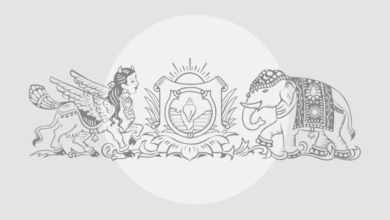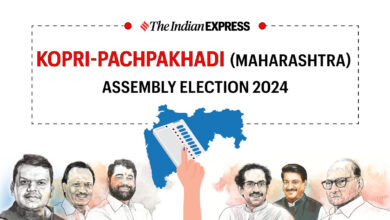UPSC Issue at a Glance
UPSC Issue at a Glance is an initiative of UPSC Essentials to focus your prelims and mains exam preparation on an issue that has been in the news. Every Thursday, cover a new topic in Q&A format and don’t miss MCQs towards the end of the article. This week’s topic is Social Media. Let’s get started!
What is the issue?
Recently, the Australian government announced plans to introduce legislation aimed at keeping children under the age of 16 off social media platforms like Instagram, Facebook, and TikTok. Prime Minister Anthony Albanese stated last week that a set of “world-leading” measures will soon be presented in Parliament.
Why is this issue relevant?
Social media has become a daily habit in our lives, especially among young people. Individuals from various age groups use social media platforms for communication and networking, indicating a growing dependency on these platforms. Thus, knowing about the social media and its impact becomes significant.
Additionally, awareness in the field of information technology is mentioned in the UPSC CSE syllabus, and previously UPSC has asked questions on this topic. This topic is also relevant for essay writing and current affairs, making it important for candidates preparing for their personality tests.
UPSC Syllabus:
Preliminary Examination: Current events of national and international importance
Mains Examination: General Studies-I, III: Effects of globalisation on Indian society, Awareness in the fields of IT.
Question 1: Why Australia is planning to ban social media for teenagers?
The Australian government has announced plans to introduce legislation that would prevent children under the age of 16 from using social media platforms. Although the draft bill has not yet been released, this announcement has sparked debates about the effectiveness and necessity of such a ban, as well as the broader impact of social media on adolescents.
Studies say problematic social media use — inability to control usage, experiencing withdrawal and neglecting other activities to use social media — has been on the rise. It has been associated with lower mental well-being, higher levels of substance abuse and less sleep.
Challenge of age verification
One of the biggest challenges in implementing these bans is age verification. While platforms like Instagram currently have age limits, they only ask users for their date of birth without requiring any verification. As a result, many children provide false information to gain access to these platforms.
The South Australian report highlighted age verification methods used by platforms, such as government IDs, credit cards, and facial recognition to identify underage users. However, these practices raise serious privacy concerns due to the sharing of minors’ data with companies.
Question 2: Why social media is a double-edged sword?
In today’s world, social media has emerged as a powerful force, connecting people on local, national, and international levels like never before due to previous technological advancements. However, it is often referred to as a double-edged sword due to the negative impact it has on multiple fronts. In this context let’s understand the advantages and disadvantages of social media.
 According to Global Statistics, Indians spend an average of 2.36 hours on social media daily. (File photo)
According to Global Statistics, Indians spend an average of 2.36 hours on social media daily. (File photo)
Advantages of Social Media
Social media is reducing social barriers. It connects people on the strength of human values, not identities.- Prime Minister Narendra Modi
1. Advanced Source of Communication: Social networking sites enable individuals and organizations to share and exchange information at a speed unmatched by traditional promotional or educational methods. For companies and organizations, utilizing social networking platforms has become essential for communicating not only with the general public but also with professional communities.
2. Helping in Good Governance: Social media has transformed the way information is shared among people. As a result, it plays a crucial role in promoting good governance by encouraging citizen participation in decision-making.
Citizens can utilize social media to report issues and communicate with the government, thereby holding it accountable. In turn, governments can use social media to engage directly with citizens, businesses, and experts to gather feedback on service delivery, develop programs, and formulate policies.
3. Medium for facilitating empowerment: One of the advantages of social media is that it has emerged as a powerful tool for empowerment. It provides a platform for voices that have historically been marginalized, allowing vulnerable sections of society to advocate for their rights, share their stories, and build supportive communities. This is particularly evident in the way social media has boosted feminist movements such as #MeToo and #TimesUp.
4. Social media and Democarcy: Social media has reduced the gap between citizens and their elected government and politicians, making democracy more participative.
Abhik Choudhury writes- “For the first time in history, we have an instrument that can question the seemingly invincible governments, make them accountable and bring sustained change driven by people beyond one vote in years.”
Disadvantages of Social Media
Social media has become an essential tool for staying connected. However, it also has some drawbacks, including the spread of misinformation and its association with higher levels of anxiety and depression. Here are some negative impacts of social media.
1. Issue of Misinformation: Social media’s widespread reach presents a significant opportunity for enhancing access to information, fostering community engagement, and bridging the gap between ordinary citizens and decision-makers. However, the issue of the spread of misinformation has emerged as the biggest disadvantage of social media.
Ruchi Gupta writes- “Social media platforms have adopted design choices that have led to a proliferation and mainstreaming of misinformation while allowing themselves to be weaponised by powerful vested interests for political and commercial benefit.
The consequent free flow of disinformation, hate and targeted intimidation has led to real-world harm and degradation of democracy in India: Mainstreamed anti-minority hate, polarised communities and sowed confusion have made it difficult to establish a shared foundation of truth.”
2. Social media impact on adolescents: The rise of social media has exposed many teenagers worldwide to name-calling, harassment, embarrassment, humiliation, stalking, threats, and even fraud. This has contributed to an increase in mental health issues among teenagers and, in some cases, has led to tragic outcomes.
If a teenager is subjected to any form of online bullying, it can leave a lasting negative impact, which can stay with the individual for years to come, said Dr Vihan Sanyal
Studies have shown that children who spend more than three hours a day on social media are twice as likely to experience mental health issues like depression and anxiety based on images of what they don’t have in their lives.
3. Issue of Internet Persona: As social beings, we inherently have a need for social acceptance, and social media often becomes a tool for validation. The number of likes one’s posts or images garners becomes a quantitative measure for many, in relation to their looks, and intelligence, and even extends to their worth as a person.
Individuals strive to maintain an ‘internet persona’ which paints a rosy picture of one’s life, using filters to hide parts considered ‘not good enough. Body dysmorphia- It is common among young people and has increased over the past few years. Use of algorithms on these platforms forces people to only watch similar content. It often leads to sense of disappointment among the youth, changes in behavioural patterns, feeling of inferiority and even cyberbullying, resulting in grave mental health challenges and illnesses.

4. Impact on mental health: Using social media in moderation is not necessarily bad. In fact, it can boost serotonin and other feel-good chemicals in the brain, helping to uplift a person’s mood. However, it becomes problematic when usage turns into a habit. As frequent social media use can alter parts of the brain that are related to emotions and learning. This is significant as the human brain develops a sense of identity and self-worth between the ages of 10 and 19.

There is also a correlation between excessive social media usage and mental disorders like anxiety, depression, sleep disorders, ADHD, paranoia, delusions, suicidal thoughts and self-harm. – Dr Vihan Sanyal, a Psychotherapist.
Thus, It is very important for users to keep a check on the amount of time they spend on social media. They need to recognise the signs of social media addiction and to take necessary steps quickly to ensure they do not become addicted to social media.
Question 3: What is the regulatory framework for social media in India?
The government is bringing laws and is taking other steps to make social media platforms more accountable for any slanderous content posted on their platforms.- Ashwini Vaishnaw, IT Minister
The government has taken various initiatives for the effective regulation of social media platforms. Such as, Information Technology (Intermediary Guidelines and Digital Media Ethics Code) Rules, 2021 (“IT Rules”).
After extensive consultations with the public and stakeholders, IT rules has been enacted under the authority of section 87(2) of the Information Technology Act, 2000, thereby superseding the previous Information Technology (Intermediary Guidelines) Rules 2011.
Under it all social media platforms are asked to set up a grievances redressal and compliance mechanism, which included appointing a resident grievance officer, chief compliance officer and a nodal contact person. The Ministry of Electronics & Information Technology has also asked these platforms to submit monthly reports on complaints received from users and action taken. A third requirement for instant messaging apps is to make provisions for tracking the first originator of a message.
Failure to comply with any one of these requirements would take away the indemnity provided to social media intermediaries under Section 79 of the Information Technology Act, 2000.
Section 79 of the IT Act, 2000
Section 79 says any intermediary shall not be held legally or otherwise liable for any third party information, data, or communication link made available or hosted on its platform. This protection, the Act says, shall be applicable if the said intermediary does not in any way, initiate the transmission of the message in question, select the receiver of the transmitted message and does not modify any information contained in the transmission.
The protection accorded under Section 79, however, is not granted if the intermediary, despite being informed or notified by the government or its agencies, does not immediately disable access to the material under question. The intermediary must not tamper with any evidence of these messages or content present on its platform, failing which it lose its protection under the Act.
Notably, In April 2023, the amendments granted the government authority to determine what information is considered false. As a result, the government can exercise extensive censorship powers by requiring intermediaries to remove posts that they label as fake or misleading.
Recently, Ashwini Vaishnaw, IT Minister said “With the spread of misinformation and deep fakes, we must take strict and urgent action to ensure that this menace is removed. So we are amending the intermediary rules. We are coming up with provisions where there is a significant responsibility bestowed on the social media platforms so that they can detect deep fakes, they can detect misinformation and take early action.
Question 4: What measures should be taken for better regulation of social Media?
The power of a tool is only as good as how we use it. It is crucial to tackle the ongoing systemic challenges in regulating social media use. Following measures can be taken for the effective regulation of social media in India:
Law for combating misinformation issue
There is a need for a comprehensive transparency law that mandates relevant disclosures by social media platforms. Additionally, content moderation and related functions such as standard setting, fact-checking, and de-platforming should be incorporated.
Ensuring Accountability for Social Media Platforms
Social media platforms play a significant role in the rapid spread of disinformation. Their design choices have contributed to making disinformation widespread and often indistinguishable from verified information. Therefore, it is the responsibility of these platforms to take action against the distribution of disinformation and its misuse.
Ruchika Gupta writes- “We recommend three approaches to the distribution of content that can be adopted by platforms:
(i) Constrain distribution to organic reach (chronological feed);
(ii) take editorial responsibility for amplified content; or
(iii) amplify only credible sources (irrespective of ideological affiliation).
The current approach to misinformation that relies on fact-checking a small subset of content in a vast ocean of unreviewed content is inadequate for the task and needs to be supplemented by a review of content creators itself.”
Prioritize mental health
We must also prioritize mental health by closely monitoring the incidence of psychiatric disorders, such as depression and anxiety, while identifying both risk factors and sources of resilience. With respect to teenagers, parents should be very mindful when allowing digital access to their children and discuss healthy use with them.
Post Read Questions
Prelims
(1) In India, it is legally mandatory for which of the following to report on cyber security incidents? (UPSC CSE 2017)
1. Service providers
2. Data centres
3. Body corporate
Select the correct answer using the code given below:
(a) 1 only
(b) 1 and 2 only
(c) 3 only
(d) 1, 2 and 3
2. Consider the following statements:
1. Safe harbour clause is prescribed under Section 79 of the IT Act, 2000.
2. Safe harbour is legal immunity that online intermediaries enjoy against content posted by users on their platforms.
Which of the statements given above is/are correct?
(a) 1 only
(b) 2 only
(c) Both 1 and 2
(d) Neither 1 nor 2
Mains
1. What are social networking sites and what security implications do these sites present? (UPSC CSE 2013)
2. Child cuddling is now being replaced by mobile phones. Discuss its impact on the socialization of children. (UPSC CSE 2023)
3. Social media is triggering ‘Fear of Missing Out’ amongst the youth, precipitating depression and loneliness. (UPSC CSE 2024)






